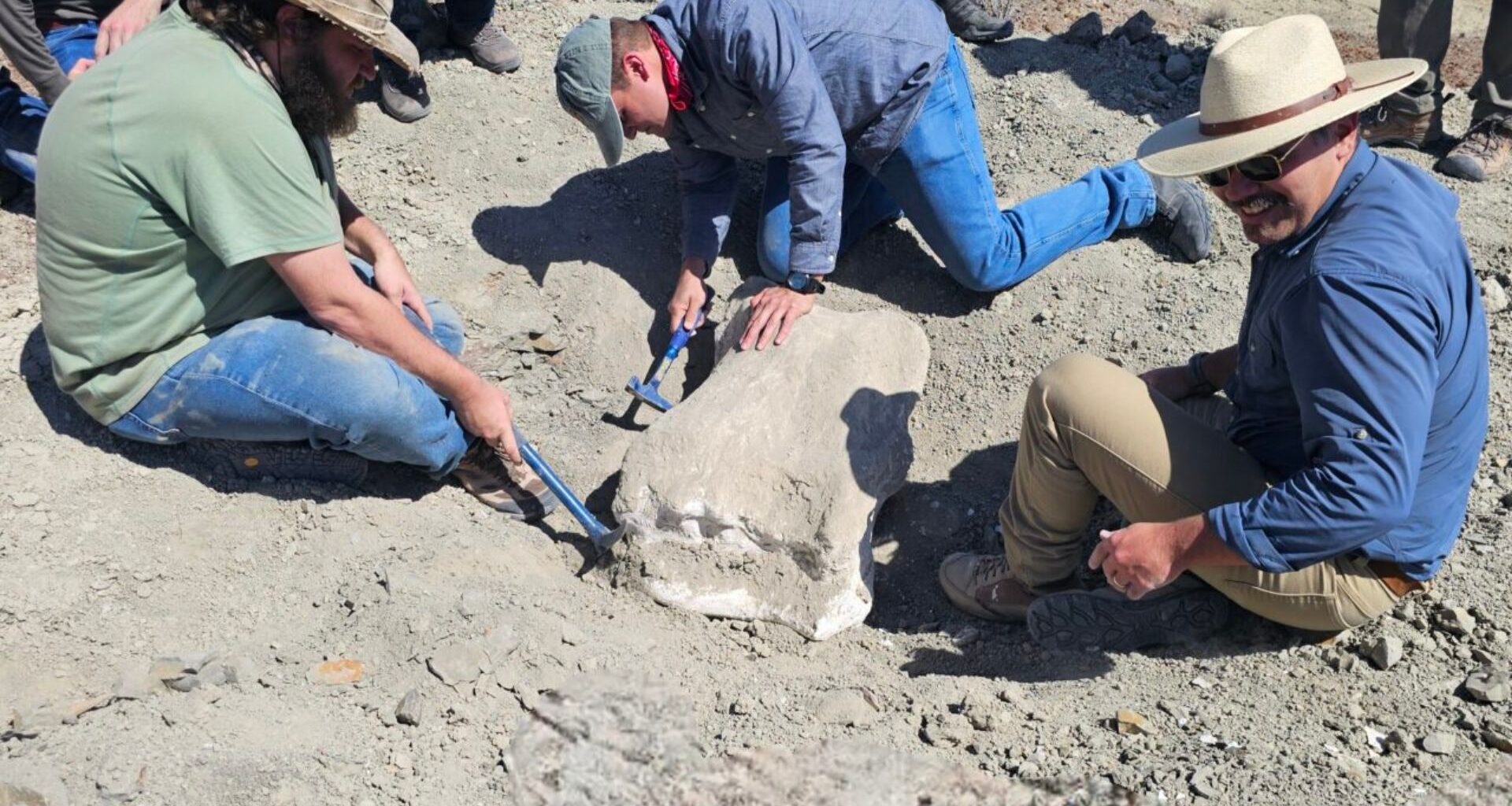A team of budding paleontologists from Sul Ross State University has unearthed a giant fossilized bone of a dinosaur from the Big Bend National Park in west Texas.
The discovered bone is part of an Alamosaurus, a long-necked dinosaur that likely roamed North America in the late Cretaceous period from about 70-66 million years ago.
“Alamosaurus is the largest known land-dwelling animal to have lived in North America,” the press release noted.
Interestingly, it is the only Late Cretaceous sauropod found in North America.
The discovery of giant bone
In March, the university’s paleontology students undertook a research trip to the park that led them to this significant find.
Led by Dr. Jesse Kelsch and Dr. Thomas Shiller, assistant and associate professors in the Geology program, students from Stratigraphic Analysis and Structural Geology courses ventured into the park. The main aim was to research the region’s Cretaceous and Eocene rock formations.
What they discovered was a remarkable find – a large vertebra belonging to Alamosaurus.
Alamosaurus was a genus of titanosaurian sauropod dinosaur that lived during the Late Cretaceous Period.
The genus includes just one recognized species, Alamosaurus sanjuanensis. The name Alamosaurus comes from the Ojo Alamo formation, New Mexico, where the first fossils were unearthed way back in 1922.
Like other sauropods, Alamosaurus also had an extremely long neck and a whip-like tail.
As per the park’s website, Alamosaurus had a wider distribution, with fossils also identified in Utah, Wyoming, and the Big Bend region of Texas. Fully grown adults of this species likely measured about 70 feet in length.
However, the fossils are often “fragmented and poorly preserved.”
This latest discovery by the Sul Ross team is believed to be part of one of the most complete skeletons unearthed from this area, originally documented by University of Texas researchers in the 1970s.
Having been successfully recovered from the field, the Alamosaurus vertebra is now housed within the paleontology laboratory at SRSU.
The press release stated that the new vertebra is also being studied alongside previously found vertebrae from the same quarry.
Big Bend – the fossil treasure trove
Big Bend National Park has long been recognized as a treasure trove of dinosaur fossils.
Among these remarkable finds are the fossilized remains of a giant pterosaur, the ancient flying creatureure that existed along with dinosaurs. The fossil remains suggested it had a wingspan of approximately 36 feet.
Adding to the park’s unique prehistoric record is the massive skull of Bravoceratops polyphemus, a giant horned dinosaur.
Reportedly, Bravoceratops is currently known only from fossils unearthed within Big Bend National Park, making it an important element in understanding the diversity of horned dinosaurs during this period.
The Big Bend region has recently yielded notable ancient discoveries.
In March, Interesting Engineering reported about the discovery of a mammoth tusk in the region. The mammoth tusk was found in the drainage area of a creek bed on the O2 Ranch, located in Brewster and Presidio counties near Big Bend National Park.
